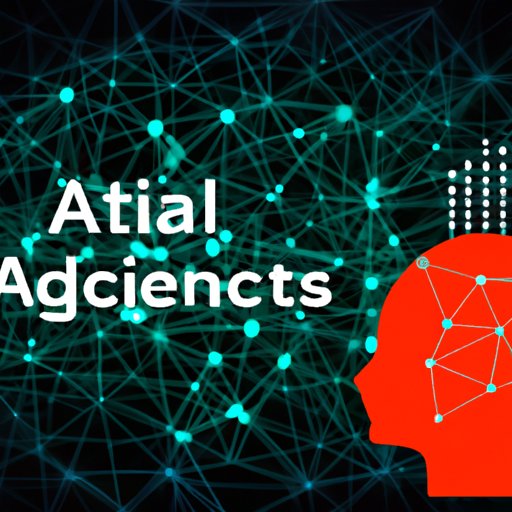Introduction
Artificial intelligence (AI) has the potential to revolutionize many aspects of our lives. From healthcare to transportation, AI is transforming industries and providing new opportunities for innovation. However, with this potential comes a risk: AI can be prone to bias, which can lead to unintended discrimination. This article will explore what is bias in AI, how to identify and address unintentional discrimination, and strategies for mitigating AI bias.
Exploring the Impact of Bias in AI: How to Identify and Address Unintentional Discrimination
Bias in AI occurs when the algorithm or process used by an AI system produces results that favor one group over another. This can lead to unintended discrimination, as the AI system may be making decisions based on factors such as race, gender, or age. To better understand how to identify and address unintentional discrimination, it is important to first understand the role of data in AI.

The Role of Data in AI
Data is the lifeblood of AI systems. It is used to train the algorithms and processes used by AI systems to make decisions. Without quality data, an AI system cannot function properly. Unfortunately, if the data used is of poor quality or biased, the AI system will learn from this data and produce results that reflect the biases in the data. This can lead to unintended discrimination.
Examples of Unintentional Discrimination
Unintentional discrimination can take many forms. For example, an AI system used for hiring decisions may give preference to certain candidates over others based on their gender or race. Similarly, an AI system used for loan decisions may reject applications from certain groups based on their age or location. These examples illustrate how bias in AI can lead to unintended discrimination.
Strategies for Identifying and Addressing Unintentional Discrimination
To identify and address unintentional discrimination, it is important to first understand the data used by the AI system. If the data is biased, then the AI system will be more likely to produce biased results. Once identified, steps can be taken to reduce the bias in the data and ensure that the AI system is not making decisions based on factors such as race, gender, or age.

The Role of Data in Reducing Bias in Artificial Intelligence
Quality data is essential for reducing bias in AI. Quality data should be representative of the population it is intended to serve, free from any biases or distortions, and collected using ethical methods. Additionally, quality data should be kept up-to-date and regularly monitored for accuracy and completeness.
Strategies for Collecting Quality Data
There are a number of strategies for collecting quality data. These include using survey methods to collect demographic data, using data augmentation techniques to improve the diversity of data sets, and creating data sets that are balanced across different demographic groups. Additionally, organizations should consider using data privacy and security measures to ensure that the data they are collecting is protected from unauthorized access.
Examining the Human Element Behind AI Bias
In addition to data, there is also a human element behind AI bias. Humans have the ability to influence AI systems through the data they provide, the algorithms they design, and the decisions they make. To reduce the risk of bias in AI, it is important to understand how humans can contribute to AI bias and develop strategies for mitigating human bias.
Understanding Human Biases
Humans can introduce bias into AI systems through the data they provide, the algorithms they design, and the decisions they make. To reduce the risk of bias in AI, it is important to understand how humans can contribute to AI bias. This includes recognizing cognitive biases, such as confirmation bias and the availability heuristic, and understanding the impact of social and cultural biases.
Strategies for Mitigating Human Bias in AI
Once human bias is identified, steps can be taken to mitigate it. These include creating data sets that are balanced across different demographic groups and using data augmentation techniques to improve the diversity of data sets. Additionally, organizations should consider implementing ethical guidelines and procedures to help ensure that the data they are collecting is free from bias.
What Can Be Done to Mitigate AI Bias?
There are a number of strategies that can be used to minimize AI bias. These include collecting quality data, using data augmentation techniques to improve the diversity of data sets, and implementing ethical guidelines and procedures. Additionally, organizations should consider developing regulatory frameworks for AI to help ensure that AI systems are operating ethically and responsibly.
Understanding How AI Learns and Why It Is Prone to Bias
AI systems use machine learning algorithms to learn from data. These algorithms can be prone to bias if the data used is of poor quality or biased. Additionally, AI systems can be influenced by the human element, such as the algorithms designed by humans and the decisions made by humans. Understanding how AI learns and why it is prone to bias is essential for reducing the risk of bias in AI.
Overview of Machine Learning
Machine learning is a type of artificial intelligence that uses algorithms and data to learn from experience. The algorithms used by machine learning systems are designed to recognize patterns in the data and make predictions based on these patterns. Machine learning algorithms can be trained on large datasets to enable them to make accurate predictions.

Factors that Contribute to AI Bias
AI bias can occur when the data used to train the algorithms is of poor quality or biased. Additionally, AI bias can occur when the algorithms are designed in a way that favors certain outcomes over others. Finally, AI bias can occur when humans make decisions that are influenced by their own biases.
Conclusion
Bias in AI can lead to unintended discrimination, so it is important to understand how to identify and address it. Quality data is essential for reducing bias in AI, and strategies such as data augmentation and ethical guidelines can help ensure that the data used is free from bias. Additionally, understanding the human element behind AI bias and how AI learns can help reduce the risk of bias in AI systems. By taking steps to reduce AI bias, we can ensure that AI systems are operating ethically and responsibly.
Summary of Key Points
Bias in AI can lead to unintended discrimination, so it is important to understand how to identify and address it. Quality data is essential for reducing bias in AI, and strategies such as data augmentation and ethical guidelines can help ensure that the data used is free from bias. Additionally, understanding the human element behind AI bias and how AI learns can help reduce the risk of bias in AI systems.

Recommendations for Mitigating AI Bias
Organizations should consider implementing the following strategies to reduce the risk of bias in AI: collecting quality data; using data augmentation techniques to improve the diversity of data sets; implementing ethical guidelines and procedures; and developing regulatory frameworks for AI. By taking steps to reduce AI bias, we can ensure that AI systems are operating ethically and responsibly.
(Note: Is this article not meeting your expectations? Do you have knowledge or insights to share? Unlock new opportunities and expand your reach by joining our authors team. Click Registration to join us and share your expertise with our readers.)
